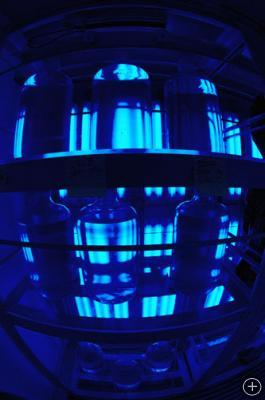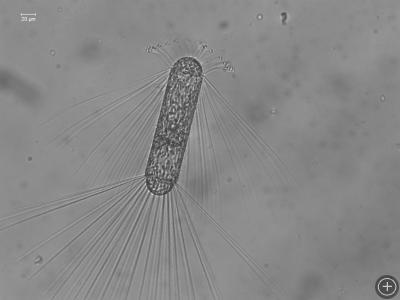Experiments with Phytoplankton Growing Close to Icebergs
April 7th, 2009
ABOARD THE RVIB N. B. PALMER, ON THE SOUTHERN OCEAN– We are experimenting with iron additions to phytoplankton populations to see possible effects of icebergs as a source of iron. Measuring iron and phytoplankton in the ocean is not sufficient to determine cause and effect. With that purpose, we grow cells under blue light in a freezer van maintained at zero degree Centigrade. We mimic day length (12-hours light) and water temperature (varying from -1 to +0.5 degrees Centigrade). We add iron to some bottles and others are kept without addition, as controls. The cultures are studied for several days, in our case for 2 weeks. This is enough time to determine if iron influences higher growth rate and if final cell concentrations are different among treatments.
We are lucky that the phytoplankton growing in our cultures are the same species found most abundant in surface waters. This ensures our results are representative of what occurs in Nature and any manipulation in our experimental design is similar to what the melting of icebergs can introduce to the ocean. Fragilariopsis sp. and Corethron criophilum are the dominant diatoms. They belong to nano- (2-20 micros) and microplankton (>20 microns) respectively. Anything smaller (picoplankton or cells < 2 microns) cannot be analyzed on board and will be studied once at home.












How many times will you need to repeat the experiment to be comfortable with your findings on iron and phytoplankton?
Love your photo of C. criophyllum.